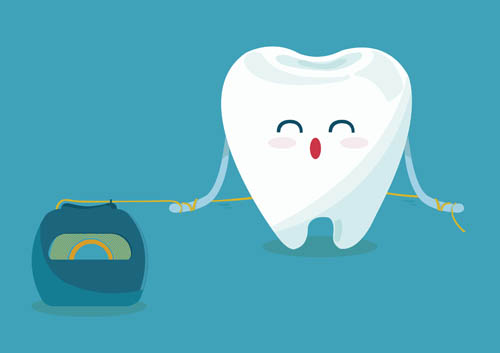Is Charcoal Teeth Whitening Safe?
March 15th, 2023

Health and beauty trends surface on the web every day, and it can be difficult to tell which ones are worth your time, or even safe, for that matter. Perhaps one of the biggest dental trends recently on Facebook, YouTube, and Instagram has been teeth whitening through brushing with activated charcoal.
Unfortunately, charcoal whitening isn’t everything the Internet makes it out to be. Activated charcoal isn’t what you use to grill at a summer barbecue; it’s an oxidized substance made from peat, coal, wood, coconut shell or petroleum heated with a gas.
Toxins and surface stains can cling to charcoal due to its adhesive qualities, which is why some people declare it’s perfect for removing discoloration on teeth. Although it may show quick results initially, charcoal is nothing more than a temporary solution.
The abrasive texture may roughen up enamel, which will make it easier for future stains to stick to the surface of your teeth. They may show stains shortly after you use charcoal on them, and may become even more discolored than before.
It’s crucial to emphasize the results of damaged tooth enamel because it cannot replenish itself, which means any damage is permanent. People with receding gums or sensitive teeth especially should steer clear of charcoal because it can make brushing too harsh and worsen sensitivity.
Long-time use can deplete enamel, which over time exposes dentin: the soft, yellowish layer in the tooth. This puts you at a higher risk for cavities, tooth discoloration, and complicated dental problems such as periodontal disease in the future.
The American Dental Association does not approve of charcoal as a safe means for whitening teeth. If you do choose to use it, do so with caution.
Charcoal should be used once every other week at the most, even if your teeth feel fine. The only proven ways to whiten teeth safely are with ADA-approved whitening products or in-office bleaching treatments overseen by a dental professional.
Before you begin any whitening treatment at home, consult with Drs. Rottschalk, Acker, and Froidcoeur to make sure your teeth won’t be harmed in the process. If you are already experiencing sensitivity, stop charcoal use immediately and make an appointment with our office right away.
If you have questions about whitening or want to schedule an in-office whitening treatment, feel free to give our Fairview Heights, IL office a call today!
Proper Flossing Techniques
March 15th, 2023

Of all the dental hygiene techniques you can use at home to promote clean teeth and good oral health, flossing is likely to be the one that troubles most people. It can be viewed as confusing and time-consuming, but when you learn how to floss your teeth correctly, you’ll find it’s easy to do on a daily basis.
Proper flossing techniques are vital to the health of your teeth and gums. These tips will help you with the correct flossing procedures. Likewise, Drs. Rottschalk, Acker, and Froidcoeur and our team can also help you learn how to floss effectively and efficiently.
Steps to Flossing Your Teeth Properly
- Choosing Dental Floss. You can find dental floss in various flavors, as well as waxed or unwaxed. If the floss you use seems to get stuck between your teeth, switch to waxed to make it easier.
- Flossing “Helpers.” Beginner flossers who have trouble coordinating the floss and the movements of their hands can use a floss holder to help them get in and around teeth.
- Preparing the Floss. Cut an 18-inch piece of floss to use for flossing a few teeth. This allows you to make progress before you must stop and cut another piece of floss.
- How to Hold It. Wind the ends around your middle fingers. Hold the floss taut, pinching each side with your thumbs and index fingers. Leave a couple inches free in the middle.
- The Process of Flossing. Use your index fingers to guide the floss toward your gum line. Bring it down between the teeth with a zigzag motion. Hold the floss in a C-shape around the tooth, and move it up and down along the side.
- Where to Floss. Use a clean portion of the floss to clean around and in between each tooth. Don’t forget about the molars in the back of your mouth, too!
Flossing: A Vital Part of Oral Care
Periodontal disease begins at the gum line; this is where flossing comes in. Regular flossing helps you remove plaque from the gum line and between your teeth to avoid gum disease. In conjunction with daily brushing and twice-a-year visits to Dr. John Rottschalk Dental Group, floss each day to maintain good oral hygiene and overall health. Gum disease can have an impact on your general health, but it doesn't have to. This easy-to-prevent condition can be avoided with regular visits to our Fairview Heights, IL office and daily flossing. Allow our team to partner with you in maintaining a bright, shiny smile and good oral health.
Recovering from Oral Surgery
March 8th, 2023

If you need oral surgery, Drs. Rottschalk, Acker, and Froidcoeur and our team will use our expertise and training to ensure that you have the best possible surgical outcome. And we want to make sure you have the best possible outcome for your recovery as well. Here are a few of the most common aftercare suggestions for making your healing as comfortable and rapid as possible.
- Reduce Swelling
Ice packs or cold compresses can reduce swelling. We’ll instruct you how to use them if needed, and when to call our Fairview Heights, IL office if swelling persists.
- Reduce Bleeding
Some amount of bleeding is normal after many types of oral surgery. We might give you gauze pads to apply to the area, with instructions on how much pressure to apply and how long to apply it. We will also let you know what to do if the bleeding continues longer than expected.
- Reduce Pain or Discomfort
If you have some pain after surgery, over-the-counter pain relievers such as ibuprofen might be all that you need. We can recommend those which are best for you. If you need a prescription for pain medication, be sure to take it as directed and always let us know in advance if you have any allergies or other reactions to medications.
- Recovery-friendly Diet
Take it easy for the first few days after oral surgery. Liquids and soft foods are best for several days following surgery. We will let you know what type of diet is indicated and how long you should follow it depending on your particular procedure. We might, for example, recommend that you avoid alcohol and tobacco, spicy, crunchy, and chewy foods, and hot foods or beverages for several days or several weeks.
- Take Antibiotics If Needed
If you have been prescribed an antibiotic, be sure to take it as directed. If you have any allergies to antibiotics, let us know in advance.
- Protect the Wound
Do NOT use straws, smoke, or suck on foods. Avoid spitting. Part of the healing process can involve the formation of a clot over the surgical site which protects the wound. If the clot is dislodged by suction or spitting, it can prolong your recovery time, or even lead to a potentially serious condition called “dry socket.”
- Maintain Oral Hygiene
Depending on your surgery, we might recommend that you avoid rinsing your mouth for 24 hours, use salt water rinses when appropriate, and keep away from the surgical site when brushing. It’s important to keep your mouth clean, carefully and gently.
- Take it Easy!
Rest the day of your surgery and keep your activities light in the days following.
These are general guidelines for recovery. If you have oral surgery scheduled, we will supply you with instructions for your specific procedure, and can tailor your aftercare to fit any individual needs. Our goal is to make sure that both your surgery and your recovery are as comfortable as possible.
Understanding Dental Insurance Terminology
March 8th, 2023

If you have a hard time understanding your dental insurance plan, particularly the treatments and services it covers, you’re not alone. That’s why Drs. Rottschalk, Acker, and Froidcoeur and our team have put together a cheat sheet to help you through them.
It’s common for patients to get lost in the morass of the terms and phrases that surface when you’re dealing with a dental insurance plan. Knowing the commonly used terms can help speed up the process and enable you to get the most out of your coverage.
Common Terms
Annual Maximum: The most your policy will pay per year for care at Dr. John Rottschalk Dental Group. It is often divided into cost per individual or per family.
Co-payment: Typically, a small amount the patient has to pay at the time of service before receiving care, and before the insurance pays for any portion of it.
Covered Services: A list of all the treatments, services, and procedures the insurance policy will cover fully under your contract.
Deductible: An amount you must pay out of pocket each year before the insurance company will contribute for any treatments or procedures. The amount can vary according to your plan.
Diagnostic Services: A category of treatments or procedures that most insurance plans will cover before the deductible, which may mean services that occur during preventive appointments with Drs. Rottschalk, Acker, and Froidcoeur, including X-rays or general screenings.
Exclusions: Dental services not covered under a dental benefit program.
In-Network: An insurance company will usually cover a larger portion of the cost of the care if you see an in-network provider for treatment.
Out-of-Network: If you visit someone who is not a part of your provider’s network, the insurance company may pay for a portion of the care, but you will be responsible for a significantly larger share out of your pocket.
Lifetime Maximum: The most that an insurance plan will pay toward care for an individual or family over the entire life of the patient(s).
Limitations: A list of all the procedures the insurance policy does not cover. Coverage may limit the timing or frequency of a specific treatment or procedure, or exclude some treatments altogether.
Member/Insured/Covered Person/Beneficiary/Enrollee: A person who is eligible to receive benefits under an insurance plan.
Premium: The regular fee charged by third-party insurers and used to fund the dental plan.
Provider: Drs. Rottschalk, Acker, and Froidcoeur or other oral-health specialist who provides treatment.
Waiting Period: A specified amount of time that the patient must be enrolled with an insurance plan before it will pay for certain treatments.
It’s essential to understand the various insurance options available to you. Knowing what your insurance covers can save you major costs in the future.
Drs. Rottschalk, Acker, and Froidcoeur and our dental staff hope this list of terms will help you understand your dental insurance plan better. Be sure to review your plan and ask any questions you may have about your policy the next time you visit our Fairview Heights, IL office.





